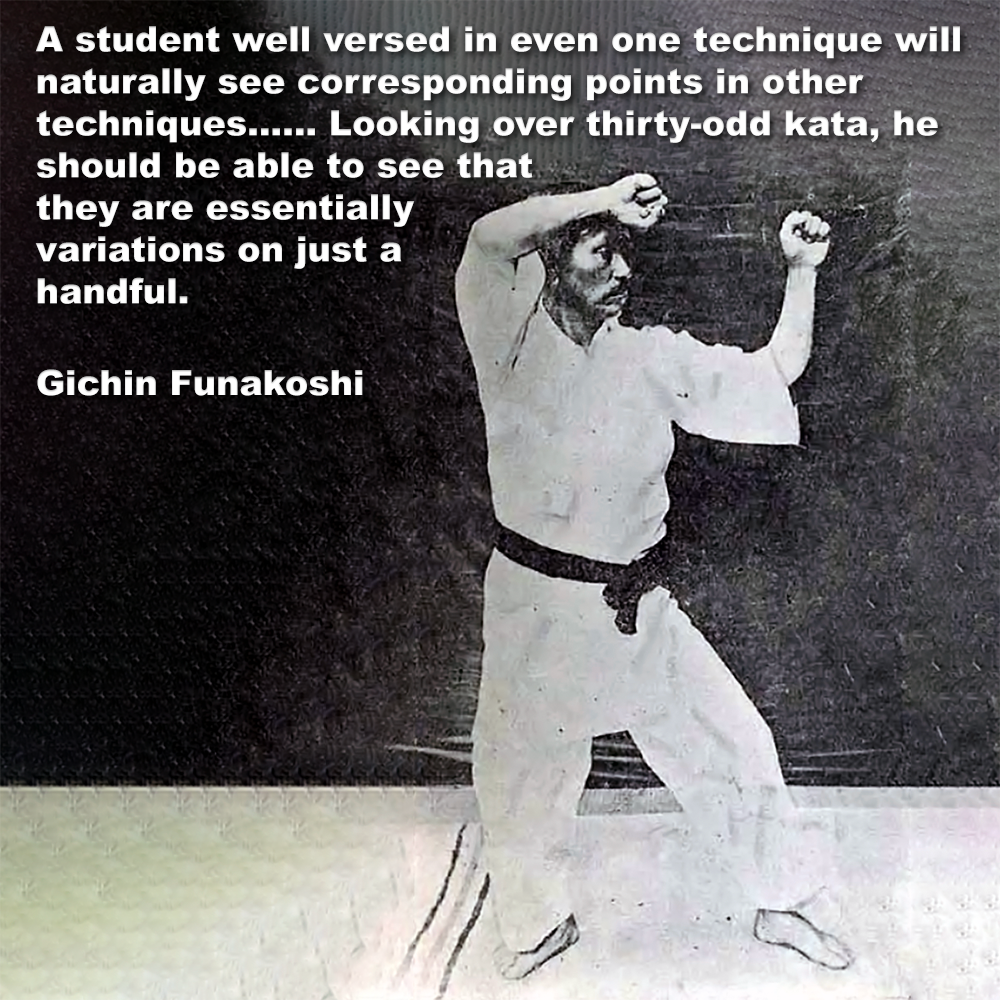
How many kata is “enough”?
.
Of course this is very subjective. What are your goals in training? What are your goals in teaching? How many are contained in your syllabus? Etc. etc.
.
If you want your students to quickly learn self-defense skills, then a smaller amount is obviously going to be more efficient, as you can put more time into less material.
.
That will also allow you to develop a deeper understanding of the kata from both a bio-mechanical and application perspective.
.
On the other hand, if you want your students to compete, or you are interested in kata preservation, or for reference, then you may study more broadly, and collect more.
.
Many people see kata as just an exercise practiced on their own. But that is only one way to train when you don’t have a training partner.
.
Ask yourself “for what purpose?” before determining the number of kata for a more precise answer… context as always.
.
If your goal is self-defense, two or three kata thoroughly learned and practiced can provide all the techniques you could ever need.
.
Alternatively by having more kata, a student can have more options. Not in the number of available techniques, but easier to choose one they can make “their own”, to explore additional variations or principles beyond the essential ones recommended for their level of proficiency.
.
Of course your style will have a number of kata to learn as you progress through the grades…. It wasn’t always this way.
.
Kenwa Mabuni wrote: ”If practiced correctly, two or three kata are sufficient as ‘your’ kata. All the others should just be studied as a source of additional knowledge. Breadth, no matter how great, means little without depth.“
.
During the Meiji era (1868-1912) and subsequent periods, Japan underwent modernization and change. Traditional martial arts were perceived as outdated, impractical, or incompatible with the changing times.
.
In response to these challenges, practitioners sought ways to preserve and promote their arts. One strategy was to systemize and codify techniques into formalized curricula. This process helped standardize teaching methods, making it more accessible and appealing to a wider audience.
.
It also facilitated the integration into educational institutions.
.
Gichin Funakoshi and other karate pioneers sought to adapt traditional Okinawan karate to fit the cultural and educational norms of mainland Japan. This process involved systemizing kata, introducing standardized training methods, and establishing grading systems.
.
There is a lot of redundancy in today’s systemized methods, most of the kata will have a common element or series of common elements threaded throughout them, each kata will reveal a different aspect of the same principle(s). And since each style has distinct principles that are the centre to its methods the kata will reflect this.
.
I think there is a balance that can be struck between deep study and broad study. That doesn’t mean students dictate which kata they learn, nor the level of competence for each kata, but rather as they advance through the grades they can make certain kata “their own” and keep exploring.
.
Originally each kata contained the lessons of an entire art. When you realize this and consider that most arts today can contain up to 30+ kata, you begin to realize that obtaining any real understanding of the applications contained is minimal, if taught at all, because the emphasis is not on understanding the postures and movements but rather on learning the kata itself.
.
From a practical perspective, I recognize that this is too many to truly study in-depth.
.
Only a very small number of kata are truly necessary if your only goal is self-defense. Then the kata need to be studied comprehensively in order to understand the meanings in them.
.
Ultimately, the number of kata considered “too many” is subjective and depends on the your goals, preferences and of course the requirements of your specific style or school.
.
Just grab a few for yourself, delve deep and try and appreciate what the pioneers left for us.
.
.
